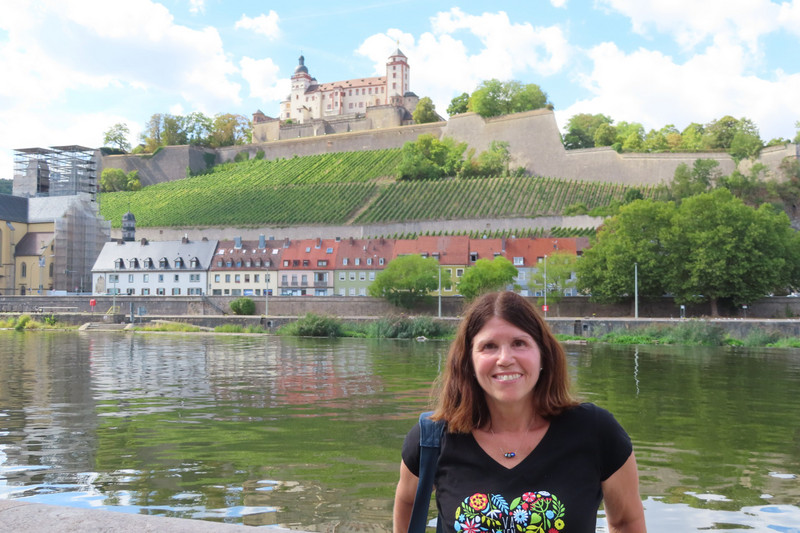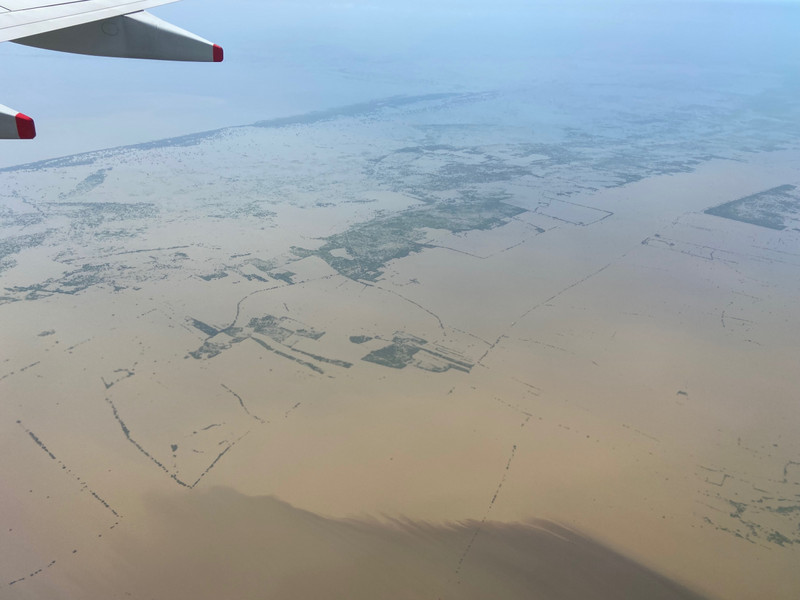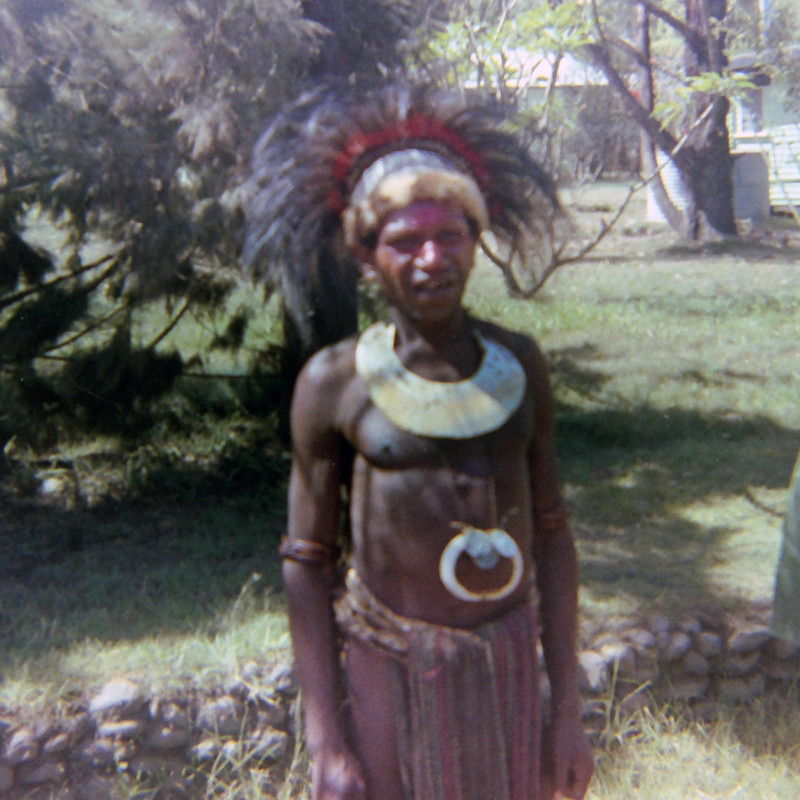Today was the day of hiking. Im not sure what we were thinking when we booked a hiking tour in the morning and a walking tour in the afternoon, but the result was we were able to see a lot of Wurzburg and get in a lot of steps! Wurzburg is a city of about 125,000 people located in Germanys Bavaria region. It is mostly known for its Baroque architecture and Franconian wine. 90 percent of the city was destroyed by the British with a single firebomb attack on March 16,1945. There was no military presence or industrial base in Wurzburg at the time, so the British destroyed the city as only an act of revenge, or to demoralize the Germans. Wurzburg had intentionally stayed away from industrialization precisely because it did not want to a target in future wars. Wurzburg today has been mostly rebuilt, rebuilding some of the ancient buildings using the original facades that remained after the firestorms and replacing all the interior structure.
For our first foray into the city this morning, we met up with our local guide Wolfgang, and our 4 fellow hikers and boarded the bus for a quick ride up the
hills overlooking Wurzburg to a place known only as Kappele (Little Chapel). Again, most people were scared off by the prospect of a hike, but the other 2 couples were a Polish couple, older than us from New Your, and a younger couple from Seattle. Wolfgang was great, and again with such a small group, we didnt need to use the electronic talk boxes.
Kappele is technically called the Pilgrimage Church of the Visitation of Mary and was initially founded in the late 17th century and built to its current state in the century. The church was not damaged in the War and is still in its original unrestored state. The church is a spectacular example of Baroque architecture with the beautiful spires on the outside and the heavily ornamental interior with beautiful frescos throughout. One of the ceiling frescos has been partially cleaned to show what the church could look like if it was restored, but there are no immediate plans to do so. But this is Europe, so people just believe: it is a church, it needs restoration, someday it will be restored, we have plenty of time.
garden path to terraced version of the Stations of the Cross. There were a series of about 4 or 5 terraces down the side of the hill, each one containing statues depicting one of the Stations of the Cross. The grounds were beautiful, but it was obvious that this part of Germany is suffering from a serious drought. At the bottom of the path, we passed into the outskirts of Wurzburg and followed the road to the garden entrance of the Marienberg Fortress. These are mostly donated gardens, where some benefactor was given the land to donate and build some public garden and the city maintains the garden afterward. There was a medicinal garden, a Japanese garden, a log cabin donated by sister city Rochester, NY, and a childs playground. In addition to these formal gardens, there are a series of garden plots that families have leased from the city for generations at a current cost of 300 Euros per year including the water. Some of these gardens are spectacular and while some may available when the lessee dies, most are passed down within families.
Fortress. Overlooking the city of Wurzburg, the fortress is an imposing site. Portions of the fortress date back to the 6th and 7th centuries with the bulk of the structure between the 16th and 18th centuries. The fortress was also severely damaged by British firebombs back in 1945, and was restored to its current state until the 1990s. There were a few historically inaccurate modifications introduced in the 1920s and Wolfgang was quick to point them out. In 1920 there was a huge horse trough and horse bathing pool added that had never existed and were not typical of the era. There is also a huge keep in the center of the square where prisoners were kept while awaiting trial in the Middle Ages.









